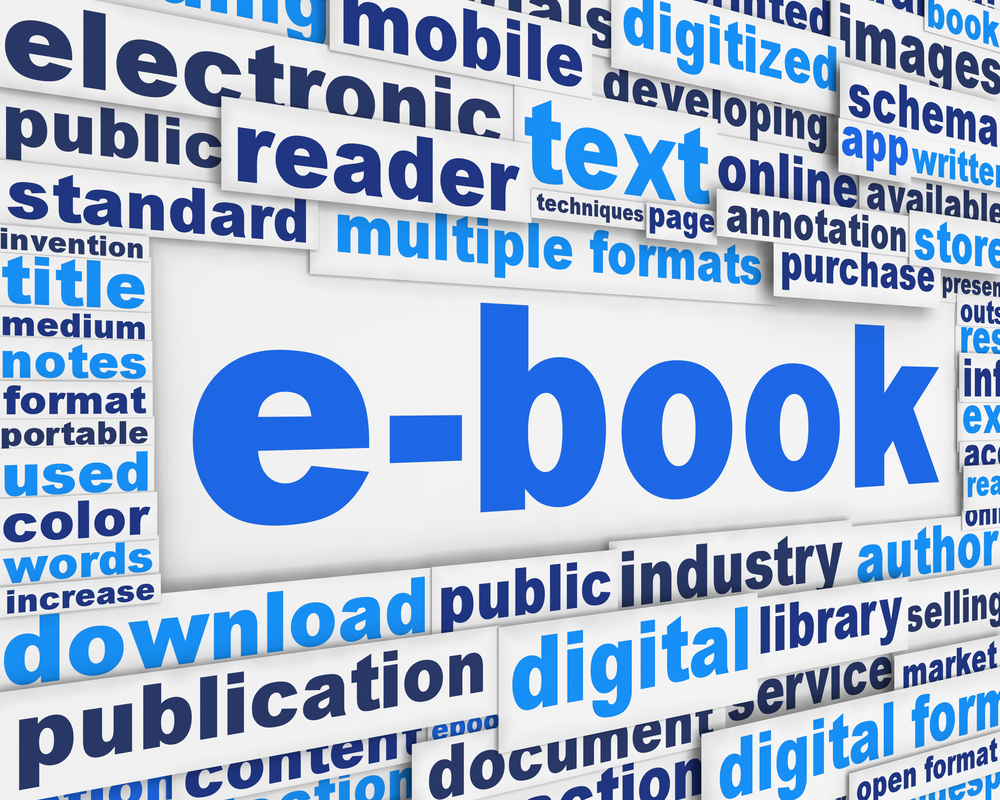So there you are, sitting in front of a computer and staring at the seemingly insurmountable task represented by a new writing assignment. How can you possibly fit such a large and comprehensive topic into one white paper? The answer is – sometimes you can’t. The best solution for this conundrum may be to construct a different type of content – an eBook.
Content marketing For lengthy topics
The first step to create an effective eBook is to ensure that this type of medium is the best choice for the given topic. While a white paper may suffice for a 1,500 word summation of a technical product, broader ideas could necessitate a longer content strategy. The visual aspects of an eBook add value to internet marketing tools, increasing ROI potential and satisfying numerous customer-related considerations.
The first step to create an effective eBook is to ensure that this type of medium is the best choice for the given topic.
eBooks are perfect for content that can be addressed in multiple readings. Thanks to effective formatting and infographics, these pieces are easy to digest and applicable to numerous industries. Comprehensive outlines, such as a step-by-step playbook for Social Media Networks or a how-to guide for setting up an ecommerce site, are the perfect topics for an eBook.
Readers should be able to easily glance at the Table of Contents, scroll to the appropriate page and develop a quick understanding of that section’s given topic. The content must have a continuous narrative, but the eBook should be set up in a way that resembles a thorough PowerPoint presentation. If a topic is appropriate for this medium, a writer can create an on-brand eBook to promotes his or her employer’s value props.
Once it is determined that an eBook is the best possible vehicle in which the content is to be delivered, an outline and deadline should be set for the content writer to follow.
Outlining an eBook with best practices in mind
Like any project that deals with a topic of significant breadth, an outline is required to ensure that all relevant points are addressed in an organized manner. In outlining the eBook, an author will be able to develop a theme for the content, which can be disseminated throughout the piece.
 These ideas should be listed in the outline, along with broad sections for the content, broken up by specific subheadings.
These ideas should be listed in the outline, along with broad sections for the content, broken up by specific subheadings.
When readers scroll through the sections, they should be able to recognize the theme that the author is trying to convey. Each piece of the eBook adds value to the narrative, if the outline is properly developed. If an idea is too broad or too narrow, the eBook’s intended value is significantly diminished.
The introduction should set the stage for the various components of the content, providing the framework that allows each section to both standalone and exist as part of a comprehensive piece of marketing collateral. A conclusion should tie the overall piece together, while providing points of action and ties back to the company.
It’s important to note that while the eBook is meant to sell either a product or service, the overall tone used in the document should be more nurturing than aggressive. Brands must use eBooks to educate prospects about the value of their offerings, and let subsequent marketing campaigns do most of the selling.
Sourcing for and structuring the content
Only the most reputable sources should be used for this content, as industry leaders and recognized names will add much more value than a quote from a smaller media outlet. Also, you want the eBook to be delivered in your voice, not simply rehashing what other industry authorities say about a given topic.
Use an authoritative tone in conjunction with relevant statistics and studies throughout the piece, establishing the content as a go-to tool for the sector.
Use an authoritative tone in conjunction with relevant statistics and studies throughout the piece, establishing the content as a go-to tool for the sector. If the company that produces the eBook has experts that help with the sections, those resources should provide the content writer with as much context as possible to prove a point. Injecting subject matter expertise into the content makes the piece more original.
Reading “according to,” in an article is fine, but eBooks should contain a distinguishable sense of creative insight. Individual readers need to think of it as THE source for information about the given topic, not just a collection of other peoples’ thoughts and assertions. The author should feel free to inject his or her own voice into the content, and draw on expert opinions only when it is absolutely necessary.
Finally, one has to think about how the client will truly get value out of the eBook, and develop SEO content that links to the research document to attract clicks and earn shares.
eBooks and ROI: Catering Content for SEO
Search crawlers cannot directly cache the eBook, but it is possible to craft other content to add value to the piece by using a comprehensive SEO content strategy.
Individually, eBooks are not ideal for SEO – many are posted as downloadable content. However, value can be created when news stories, press releases or landing pages link to the document. Keywords in these pieces will attract readers, and the company will gain visibility from users who click through to the actual eBook.
It is also possible to include social sharing icons within the eBook. This will help generate more views and shares, while adding value to companies’ social media marketing campaigns. Linking to YouTube videos will also add credibility to the brand, as executives or other internal experts can explain or summarize the content in a visual presentation.


